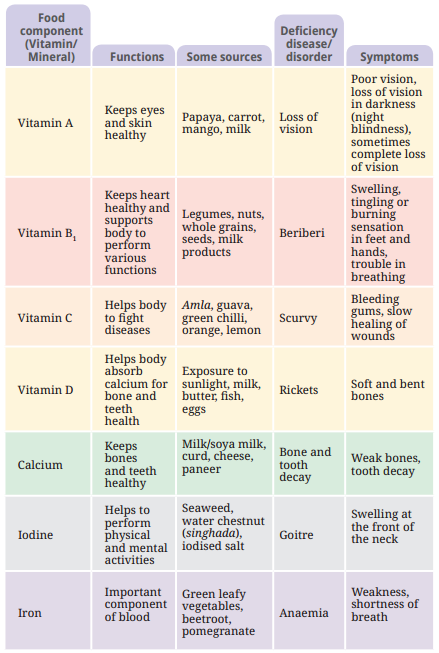NCERT Solutions for Class 6 Chapter 3 Science FREE PDF Download
FAQs on NCERT Solutions for Class 6 Science Chapter 3 Mindful Eatinga Path To A Healthy Body World
1. What is mindful eating according to Chapter 3: Mindful Eating: A Path to a Healthy Body?
Mindful eating refers to being aware of what we eat and how we eat it, which helps in making healthier food choices. Vedantu’s NCERT Solutions explains this concept clearly, helping students understand the importance of eating habits in maintaining good health.
2. How does food contribute to our overall health as discussed in Chapter 3?
Food provides energy, supports growth, and protects the body from diseases. Vedantu’s NCERT Solutions offers in-depth explanations of how different nutrients contribute to our well-being, ensuring students grasp the role of a balanced diet.
3. What are the main components of food as per Chapter 3: Mindful Eating: A Path to a Healthy Body?
The main components are carbohydrates, fats, proteins, vitamins, minerals, dietary fibres, and water. Vedantu’s NCERT Solutions breaks down each component, making it easier for students to understand their functions and importance.
4. What are the benefits of a balanced diet according to Chapter 3?
A balanced diet provides essential nutrients in the right quantities, ensuring proper growth and protection from diseases. Vedantu’s NCERT Solutions helps students learn how to plan a balanced diet and its importance for health.
5. How do Vedantu’s NCERT Solutions explain the role of carbohydrates and fats in Chapter 3?
Carbohydrates and fats are primary sources of energy. Vedantu’s solutions clarify their functions with examples, making it easy for students to understand how these nutrients fuel the body for daily activities.
6. What is the significance of vitamins and minerals as discussed in Chapter 3: Mindful Eating: A Path to a Healthy Body?
Vitamins and minerals strengthen the body and protect it from infections. Vedantu’s NCERT Solutions provides detailed explanations of how these nutrients work, ensuring students grasp their role in maintaining good health.
7. How does Chapter 3 explain the effects of nutrient deficiencies?
Deficiencies in essential nutrients can lead to diseases such as scurvy or goitre. Vedantu’s NCERT Solutions highlights real-life examples, making it easier for students to understand the consequences of nutrient deficiencies.
8. What is the importance of avoiding junk food as per Chapter 3?
Junk food is high in fats and sugar but low in essential nutrients, making it unhealthy. Vedantu’s NCERT Solutions emphasise the negative effects of junk food and guide students on making healthier food choices.
9. How do Vedantu’s NCERT Solutions help students understand the concept of food miles in Chapter 3?
Food miles refer to the distance food travels from production to consumption. Vedantu’s NCERT Solutions explains this concept in simple terms, helping students connect the idea to sustainability and the importance of eating local.
10. What is the role of dietary fibre in Chapter 3: Mindful Eating: A Path to a Healthy Body, and how do Vedantu’s NCERT Solutions explain it?
Dietary fibre helps the body get rid of undigested food and ensures smooth digestion. Vedantu’s NCERT Solutions clearly explains the benefits of fibre, ensuring students understand how roughage supports digestive health.


















